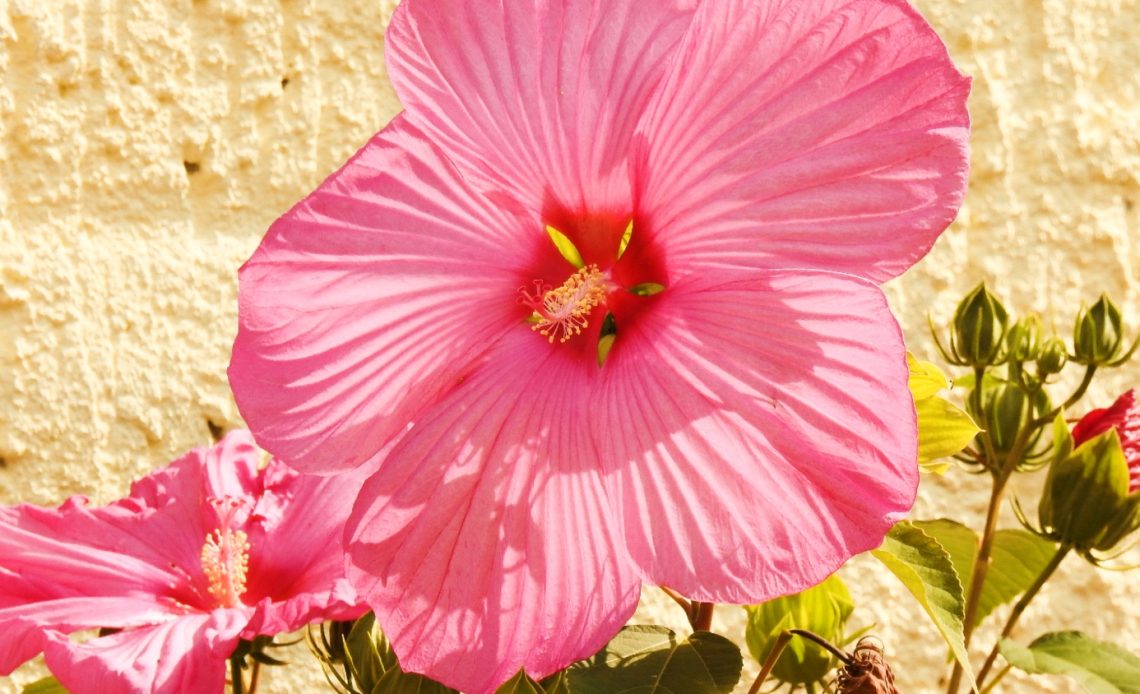

We’re here to help! Wild Yards is a completely free website that is 100% dedicated to helping you create a wildlife-friendly, sustainable yard. Read more
WildYards is reader-supported. When you buy a product through a link on our site, we may earn a comission. Every product is independently selected by our (obsessive) editors and our reviews are unbiased and objective. Read more about our mission or our privacy policy.
Hibiscus is a popular choice for gardens in zone 5 through 10, as these showy flowers prefer warm, sunny climes. Compared to other ornamental shrubs, like roses, these plants require very little care. Under ideal circumstances, hibiscus is a prolific bloomer, producing scads of showy, tropical-looking flowers from mid to late summer. But if your hibiscus doesn’t have many flowers on it this season, you may be wondering why your hibiscus is not blooming, and what you can do to encourage it to bud out.
Too much shade, incorrect soil conditions, overwatering, and underwatering are the most likely reasons why your hibiscus is not blooming. Insect infestations, improper feeding, and improper pruning can also contribute to poor bloom production.
11 Reasons why a hibiscus won’t bloom and solutions that actually work
If your hibiscus doesn’t have many flowers on it, that can be a sign of an underlying issue. Like many other flowering shrubs, hibiscus plants only bloom when they’re thriving. And if they’re not blooming, then it’s worth taking a second look at the way you’re caring for them. Here’s a list of the most common reasons why hibiscus won’t bloom, plus solutions that will actually work.
The problem: insufficient sunlight
Although some varieties of hibiscus can tolerate partial shade, most cultivars prefer to grow in full sun. If your hibiscus has a history of underperforming, there’s a good chance that it’s not getting enough sunlight in its current location. Keep an eye on the plant over the course of a day to gauge how much light it receives. If your hibiscus gets less than 6 hours of sun a day, it needs more light to help it produce flowers.
The solution: move the plants out of the shade
Potted hibiscus can easily be carried to a new location where they’ll receive enough sunlight. But plants that are growing in the ground will have to be transplanted. Choose a bright spot for your hibiscus and dig a hole twice as wide and as deep as your hibiscus plant’s roots. Backfill around the plant carefully, tamping gently to remove any air pockets, and water the plant well when you’re done. Keeping the soil moist is key to helping newly transplanted plants get re-established, so don’t let the ground dry out. Once your hibiscus settles in, it will make good use of the extra light and start producing more flowers, although some plants will only show signs of improvement the following growing season.
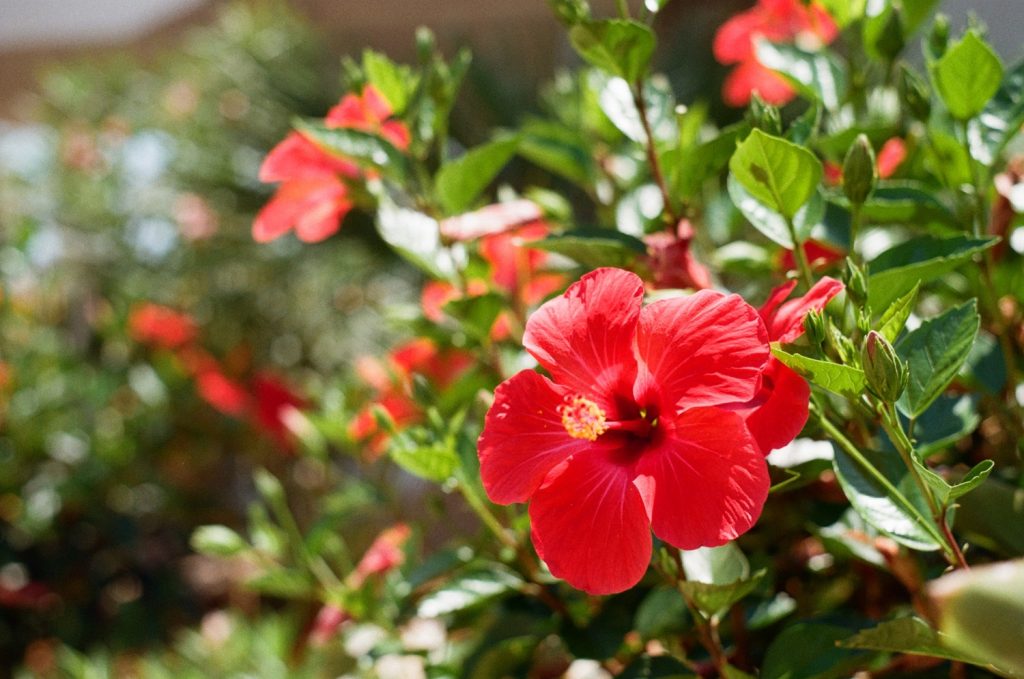
The problem: too much sunlight
You always want to make sure your hibiscus plant gets plenty of sunlight. But too much sunlight can have a damaging effect. If temperatures in your region reach the 90s and 100s on a regular basis and you have your hibiscus planted in a location where it receives 8 or more hours of sun every day, that could be too much heat for it to handle. In addition to the hibiscus not blooming, you’ll also notice the foliage wilting, turning yellow and brown, and drying up.
The solution: transplant the hibiscus to a shadier location
If your hibiscus is sun-scorched, don’t waste another minute. Move the plants out of the sun so they can cool down and recover. Bring potted plants up onto your porch during the hottest part of the day, and transplant hibiscus plants growing in your landscaping to a new spot where they can get some shade in the afternoons. Remember to water your hibiscus regularly in the weeks following transplanting to encourage the plant to get established. Once the hibiscus’s health improves, it can focus on reproducing and flower production will increase.
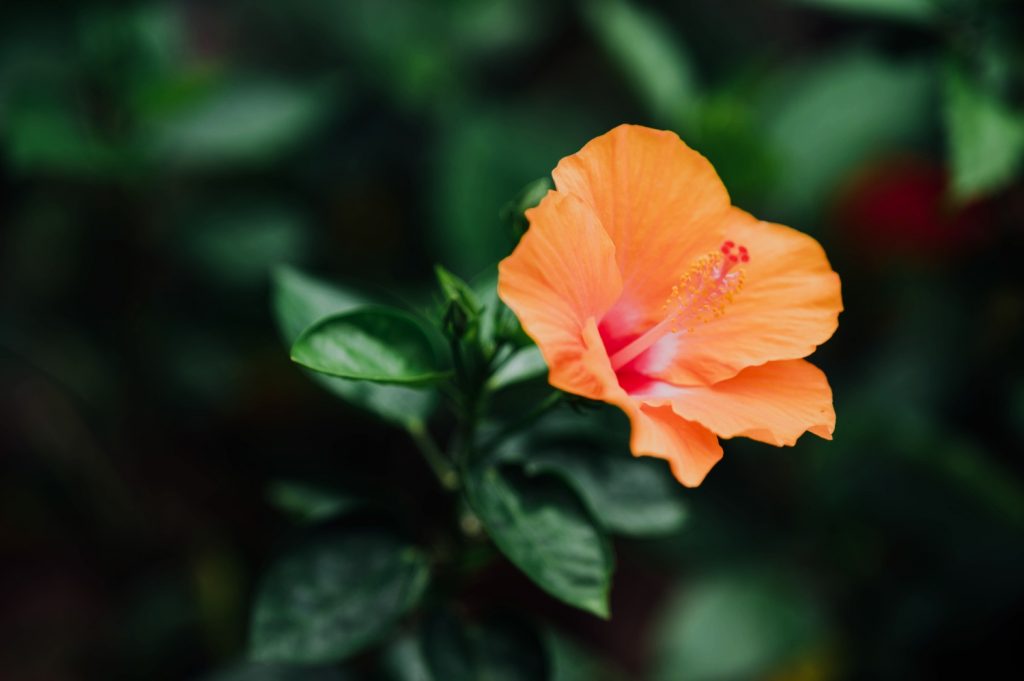
The problem: incorrect soil conditions
Hibiscus shrubs need fertile, well-draining soil with a neutral to slightly acidic pH. If your hibiscus is growing in the wrong type of soil not only will it fail to bloom, but its leaves will also likely turn yellow or brown. If your hibiscus is not blooming, examine the soil. If it’s clay-rich and sticky, or if it’s overly sandy and won’t retain any water, then it’s less than ideal for your hibiscus. Alkaline and extremely acidic soils are also inappropriate, as hibiscus is unable to absorb all of the nutrients it needs at these pH levels.
The solution: amend the soil
If your hibiscus plant’s soil is too moist, add some sand to loosen things up and improve drainage. If the soil is too sandy or nutrient-poor, a heaping dose of compost can help. Your hibiscus will benefit from the added nutrients and will finally be able to support healthy bloom production. Once you’ve adjusted your soil’s texture, test the pH. Hibiscus grows best between 6.0 and 7.0. If your soil is too alkaline, add acidic amendments like sulfur and peat moss. And, if your soil is too acidic, you can raise the pH by adding crushed limestone.
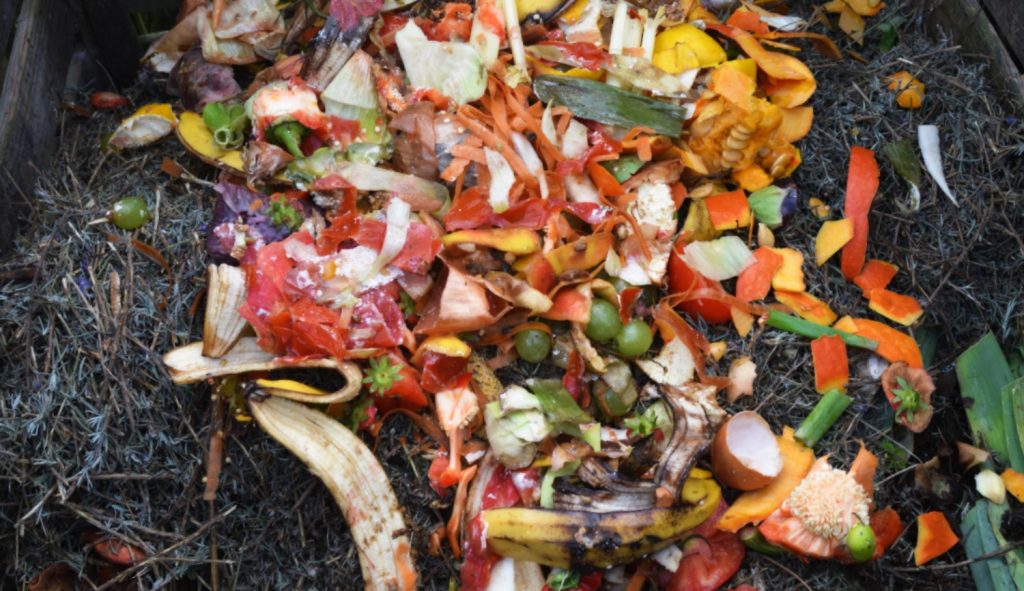
The problem: overwatering
Some plants like a lot of water. Willow trees and daylilies, for instance. But hibiscus is not in that category. Even though hibiscus plants grow best in moist soil, it’s crucial that their soil also drain well. These plants won’t bloom if they’re sitting in waterlogged soil day after day. Take a look at the area where your hibiscus is planted. If you notice stagnant puddles of water nearby, that’s a good sign the soil is too damp for the plant’s liking. Excess rainfall, or simply leaving the hose on the plant for too long, can also result in overwatering.
The solution: improve drainage and allow the soil to dry out
If your hibiscus is not blooming because it’s been overwatered, the first thing you need to do is turn off the hose. Scale way back on your watering program to give the plant a chance to breathe. Next, work on improving drainage. Dig a ditch to allow excess water to run off. Amend the soil with sand and pea gravel to make the dirt more porous. If these measures don’t make a difference, then consider moving the hibiscus to a new location. Once your hibiscus dries out and the plant recovers, it will resume blooming as normal.
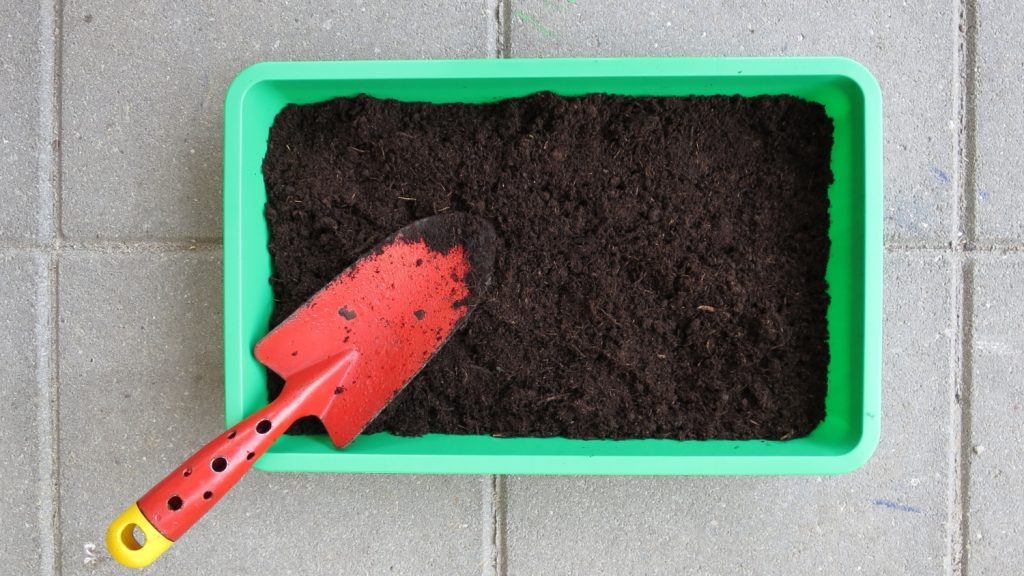
The problem: underwatering
Too much water won’t do your hibiscus any good, but neither will too little. Hibiscus are tropical plants. They grow best in warm temperatures and high humidity — conditions that allow the soil to stay evenly moist, but not overly drenched. If the soil your hibiscus is planted in dries out and stays dry for too long, the plant won’t bloom much, if at all. You’ll also likely notice the foliage wilting, turning yellow and brown, and dying back. This is the plant’s desperate attempt to conserve moisture.
The solution: give your hibiscus a drink
Check the ground around your hibiscus. If the soil feels dry and powdery two to three inches down, then it’s much too dry. Give the shrub a good, soaking watering to reach the deepest roots, and test the soil again in a few days to ensure it’s still moist. Keeping the soil damp ensures the hibiscus stays hydrated enough to focus on flowering. Remember to water your hibiscus in the morning to give the excess moisture time to evaporate before sundown. This will help prevent fungal infections. If your hibiscus dries out too much in between waterings, consider applying a layer of mulch to help it retain water.
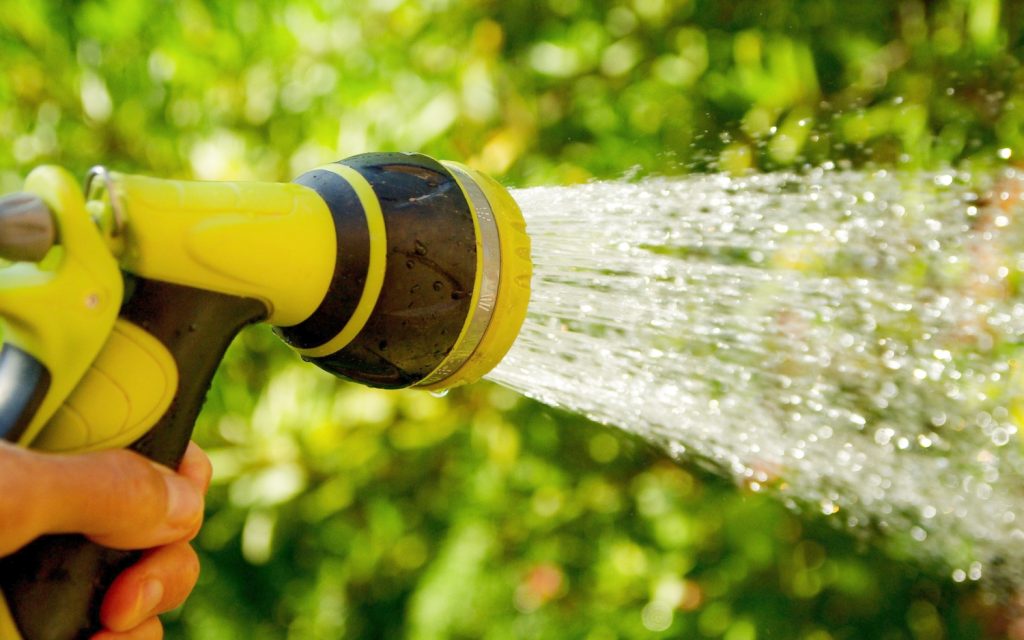
The problem: insect infestation
Thrips, sawflies, aphids, mealybugs, Japanese beetles, and spider mites are a few of the garden pests that will make a meal of hibiscus if it’s available. If your hibiscus plant is suffering from an insect infestation, you’ll likely see the bugs themselves hiding in between the foliage. But, sometimes, all you see are signs that insects have been around — leaves with chewed edges, holes and white trails along the foliage, eggs on the undersides of leaves, and falling flower buds.
The solution: use an insecticide
If your hibiscus has fallen prey to bugs, you need to act fast. If your hibiscus loses most of its foliage to insects, it will expend so much energy just trying to stay alive that it won’t even be able to think about blooming. Use a garden hose to spray the plant down. This will wash the bugs off and help break up their eggs. Then, once the plant dries, spray an insecticide onto the foliage to prevent the insects from returning. Use one of our homemade insecticide recipes to kill the bugs without using chemicals. It may take several applications, but be persistent.
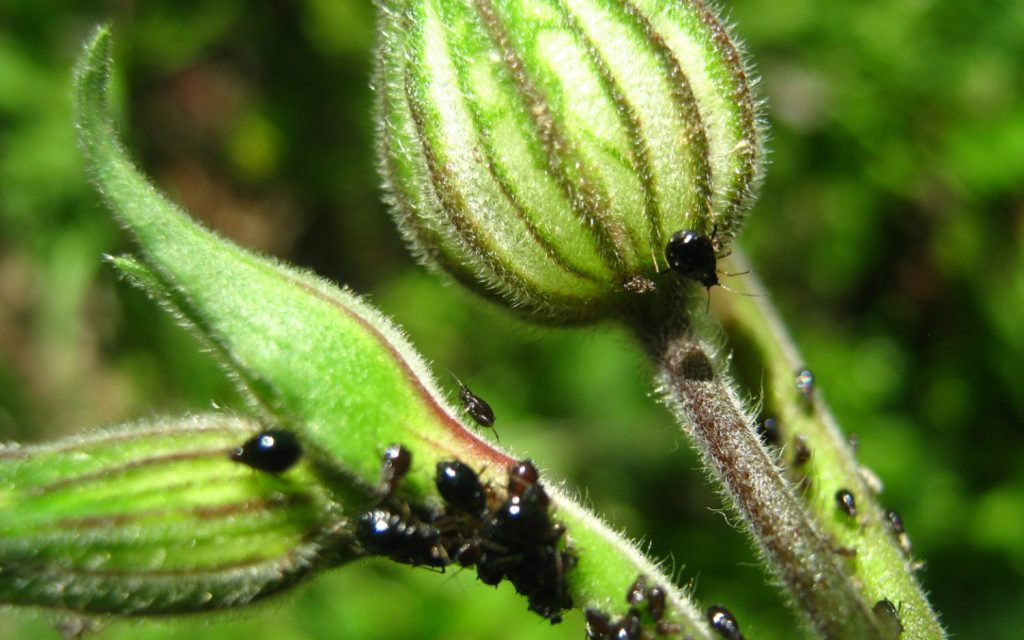
The problem: root-bound
If your hibiscus is growing in a pot and it hasn’t bloomed very well this year, even though it’s bloomed just fine in the past, then it’s probably root bound. When a potted plant becomes root bound, that means its roots have grown excessively, to the point where there’s no more space in the pot for roots to go. The roots grow in a circular pattern around the pot, strangling the plant, and preventing it from utilizing the moisture, oxygen, and nutrients in its soil. Take your hibiscus by the root collar and gently wriggle it around the pot. If the whole plant, dirt and all, move as one, that’s a good sign the plant has outgrown its pot.
The solution: repot the plant
Hibiscus is one of those plants that grow best in the ground. So, if possible, transplant your root-bound hibiscus to a spot in your garden. If you haven’t got a garden, you’ll need to move your hibiscus to a bigger pot. Choose one that is twice as wide and as deep as the plant’s current pot. Make sure to drill holes in the bottom to improve drainage. Adding a few large rocks will help excess water escape, too. Soak the hibiscus in a bucket of water ahead of time so it comes out of its pot easily. Use general-purpose potting soil to fill in around it. Once the hibiscus has been repotted, be sure to keep the soil moist to help the plant recover. Giving a root-bound hibiscus more room to branch out is the best way to get it to start blooming again.
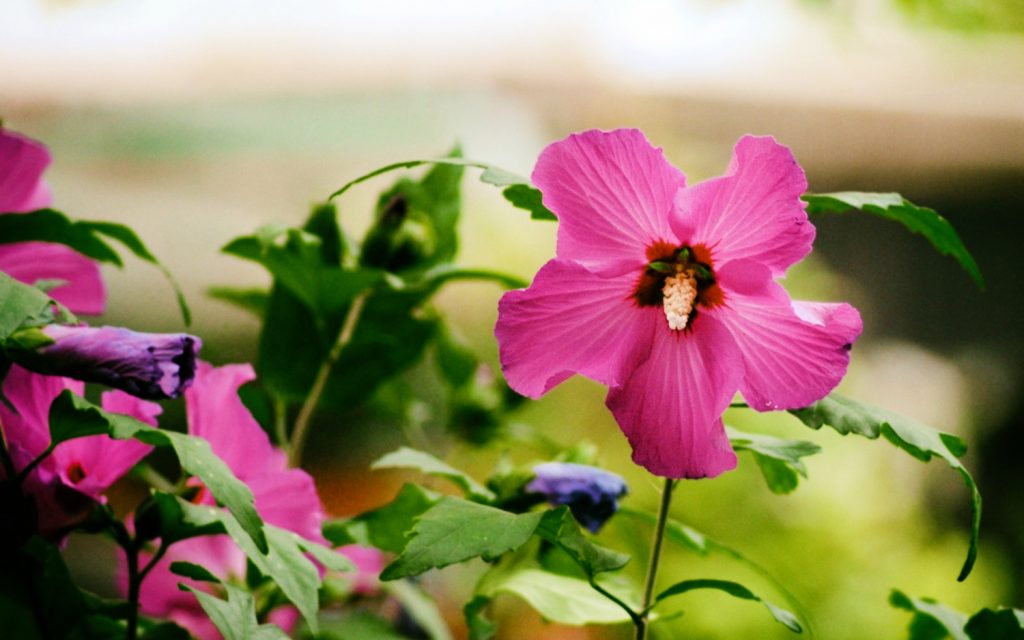
The problem: overfertilizing
Hibiscus plants grow best in fertile soil that’s full of decaying organic matter. Not only do these materials keep the soil loose so air and water can penetrate easily, but they also provide a steady supply of nutrients as they break down. If you planted your hibiscus in nutrient-dense soil and it bloomed beautifully for several seasons only to put the brakes on flower production once you started feeding it, that’s a sign that it has been overfertilized. In addition to poor bloom production, you may also notice your hibiscus’s leaves turning yellow and developing brown, burned-looking edges.
The solution: stop feeding the plant
Hibiscus plants love lots of nutrients. Like hydrangeas and lemon trees, they’re heavy feeders when they bloom. But overfertilizing can halt flower production. Excessive nitrogen levels from over-feeding encourage the plant to produce more leaves than flowers, and, in some cases, may burn the foliage, resulting in yellow leaves with brown, crispy edges.
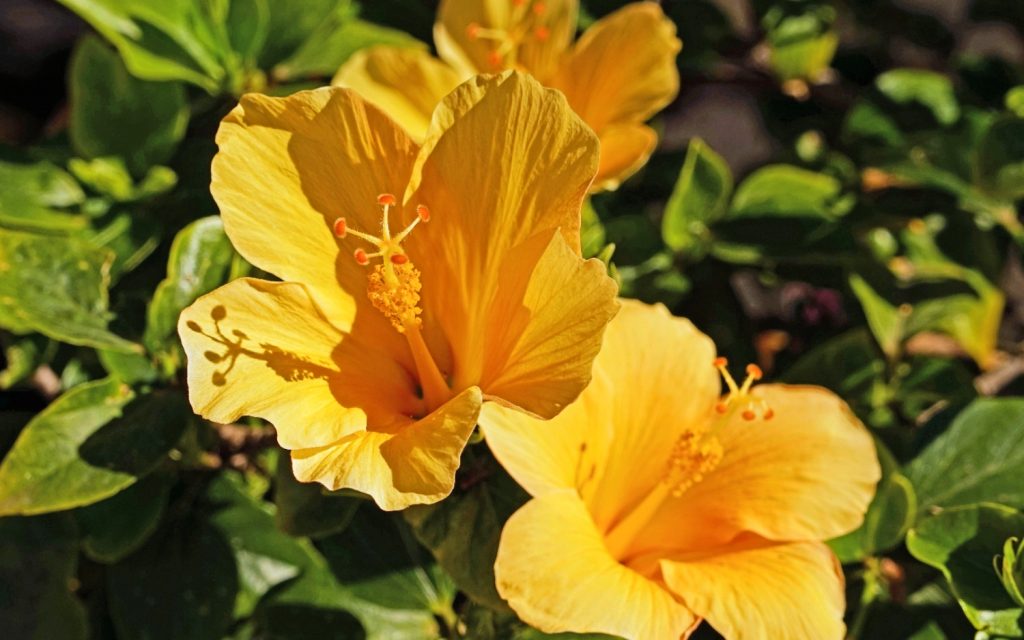
The problem: over-pruning
Pruning is a great tool in your arsenal as a gardener. It can help improve a plant’s appearance and promote air circulation to prevent fungal infections and diseases, plus, it can help stimulate new growth. But if you take too much off the plant at one time, then your hibiscus may feel that it needs to devote nutrients to replacing the lost branches, rather than producing flowers. Pruning your hibiscus at the wrong time of year can have a similar effect.
The solution: prune hibiscus conservatively and at the right time
Young hibiscus plants don’t need to be pruned. While it’s safe to remove obviously dead leaves, stems, and flowers, you shouldn’t clip a young hibiscus back excessively because it doesn’t benefit the plant. Older plants that have lots of established, woody stems can tolerate heavier pruning. Removing some of the misshapen older growth shapes the plant and encourages flower and foliage production. For best results, prune your hibiscus in spring, and never remove more than a third of the plant at once.
The problem: incorrect climate
Hibiscus performs best when the temperatures are consistently in the upper 60s to the upper 80s. In extreme heat, the plant’s foliage wilts, leaves turn yellow and fall off, and flower production takes a serious hit as the plant works to conserve moisture. Of course, if the weather is too cool, the plants won’t be able to bloom then, either. Cold temperatures are often accompanied by dry air, and the lack of warmth combined with the low humidity is a far cry from the hibiscus’s preferred tropical environment. Since these conditions are less than ideal, you’ll notice the hibiscus not blooming, in spite of your best efforts to encourage it to.
The solution: protect the plants from the elements
If your growing zone stays too chilly for your hibiscus to thrive outside, transplant it to a pot and move it to a sunny spot indoors. Keep a humidifier nearby if necessary to prevent the plant from drying out. If your hibiscus grows well outside but needs some extra protection from the elements, be sure to cover it to protect it from late-season frosts, and move it to the shade when necessary when temperatures reach the upper 90s. Mitigating the effects of extreme temperatures will help keep your hibiscus stress-free so it can focus on blooming.
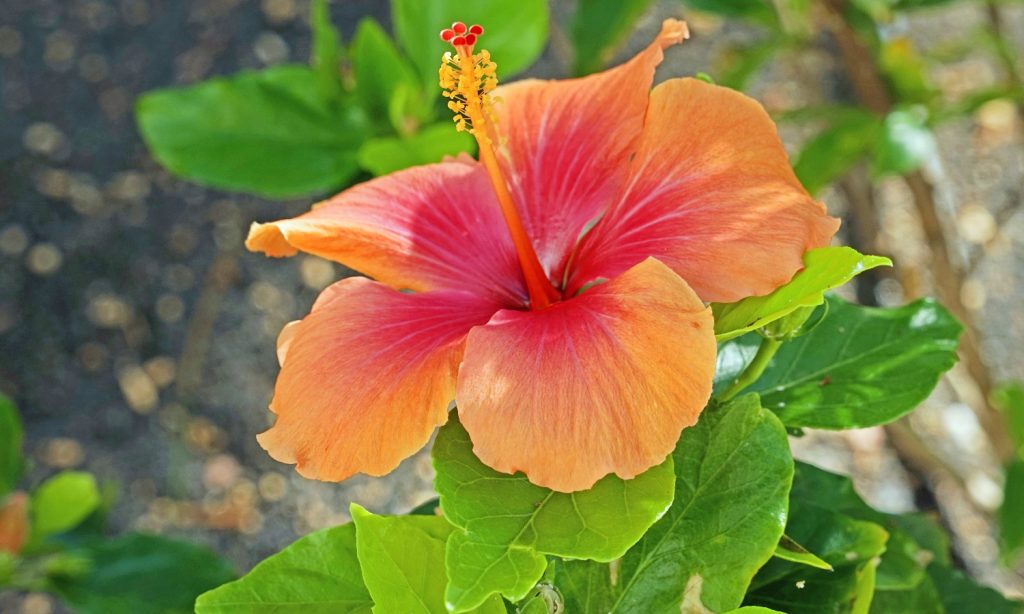
The problem: no dormancy period
In temperate environments, hibiscus plants may not go dormant over the winter. While most people would consider a mild winter to be a good thing, plants may have a different opinion on the matter. Going dormant over the winter gives plants a chance to recover from the previous growing season and gear up for the next one. If your hibiscus didn’t go dormant after the winter, that could explain why it hasn’t bloomed much this season.
The solution: let the plants get cold over the winter
The fact of the matter is you can’t force your hibiscus to go dormant. If your ecoregion is so temperate that your hibiscus doesn’t “sleep” through the cold months, there’s really nothing you can do. However, if your hibiscus didn’t go dormant because you covered it when the weather got especially cold, then you should avoid covering it. Let your hibiscus freeze when entering winter. This will encourage the plant to go dormant. Only once the plant buds out in spring should you protect it from the cold. Encouraging the plant’s natural dormant period helps promote bloom production the following season.
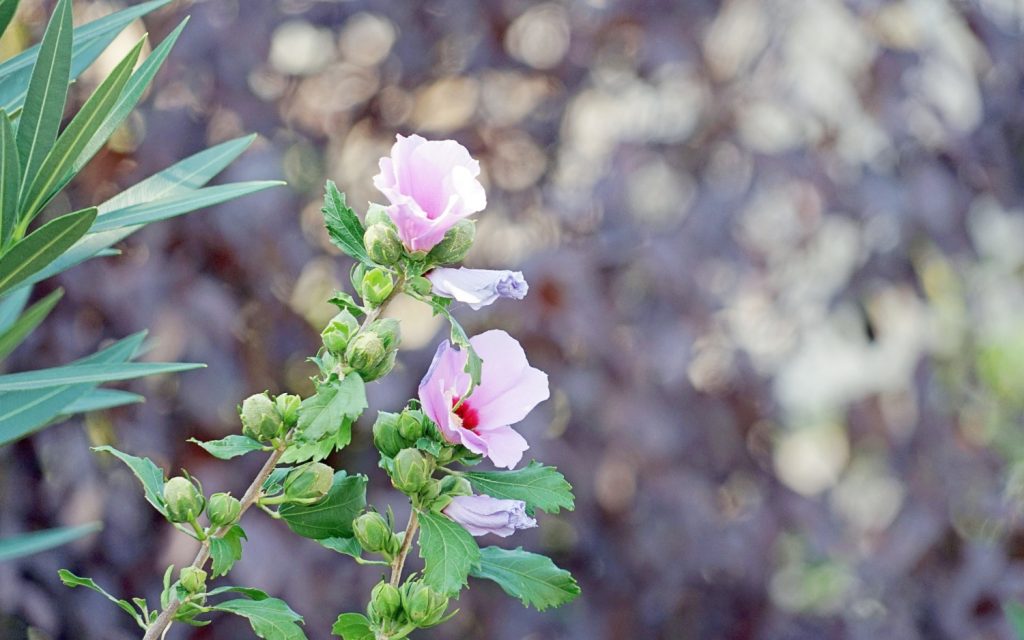
What can you do to encourage your hibiscus to bloom?
The best way to encourage your hibiscus to bloom is to meet all of its most basic growing requirements: plant your hibiscus in full sun and in moist yet well-draining soil that has a slightly acidic to neutral pH. Amend the soil with plenty of organic compost to provide the plants with adequate nutrition. Deadhead the plant regularly, and prune live growth sparingly. All of these measures will keep the hibiscus healthy ensuring ample bloom production during the flowering season.

I live in zone 4. My tropical hibiscus always blooms but not until usually September. I used to have the potted plant in the corner of my lower deck so it would get more sun but then the wind would blow it over. This year I moved it closer to the house which gave it more shade. In both cases the flowers didn’t appear until September. The one I had before this would bloom all summer long when in the house. This was before I got a deck. All my other plants grow like crazy when I put them outside for the summer so I thought the same would happen with the hibiscus. The leaves are always healthy so I can’t figure out what the problem. Then I thought maybe the humidity was to high. Any ideas what could be wrong? Right now it’s blooming like gang busters. I usually cut it back for the winter (it gets too big), put it in the basement and only water it a little bit. It always comes back.
Hi Michelle! Thank you so much for your question! It sounds like there are several things that could be preventing your hibiscus from blooming. If your new hibiscus is a different variety than the previous one you kept indoors, that could account for its lack of blooming. Some varieties of hibiscus naturally bloom more than others. But, if your current hibiscus is the same type as the old one, then I would think the light and temperature are most to blame. The fact that it’s blooming so late in the season may indicate that conditions aren’t ideal for it to bloom until late summer. Hibiscus thrive in 80+ degree weather and perform best when they receive 6 to 8 hours of sunlight. So be sure to keep your hibiscus in the sunniest place possible to keep it nice and warm. The humidity shouldn’t hurt it one bit, hibiscus are highly tolerant of humidity. And since you say the leaves are healthy, it doesn’t sound like that’s the issue. It’s possible that you may be pruning it too soon or too aggressively after flowering. Try pruning the shrub as conservatively as possible, and try to wait several weeks after the last flower dies before cutting it back. Keep the plant in your basement and care for it as per usual over the winter (it sounds like you’re doing a great job of helping it through its dormant period!). Then, in the early summer when the plant has regrown, feed it a dose of bone meal. Giving the plant more phosphorus will encourage it to bloom earlier in the season. I hope this helps you! If you have anymore questions, just leave another comment!